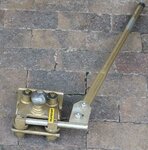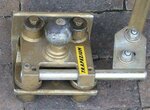- Jun 20, 2005
- 20,288
- 5,483
- 50,935
Not sure I agree Prof.I suspect ATC or it's equivalents, has not been widely adopted so far becasue of cost.
To some extent I'd ask is ATC necessary ? and the accurate answer is no - providing everyone loads and drives caravans correctly. However there can be little doubt that some people fail to load or drive correctly, so the assistance ATC can provide is beneficial, but it hasn't reached the public's or politicians minds in the same way the Seat belts ABS braking and daylight driving lights etc have.
Perhaps in the future ATC will bee seen as one of those essential back up safety devices and produce insurance incentives or made a legal requirement.
There would of course be difficulties becasue it can only be fitted to trailer with brakes and that would exclude sub 750KG garden trailers, and some other commercial trailers.
loads , weights etc absolutely mandatory. But way back in the 70s I used a Scott stabiliser on many caravans and cars. You may recall it was a massive friction damper with a big leaf spring. IMO it went a long way to damp out snaking oscillations. Today its big brother is built into to the Al-ko hitch. ATC to me is like a match. You don‘t need it until something untoward happens. One strike and it could save your life and outfit. I’d advocate having it without question even if in most cases it doesn’t get used, but.......




